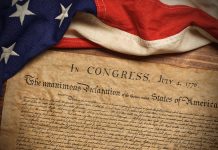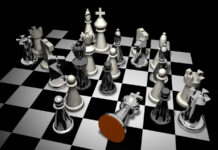A Cautionary Tale…
Many of the inhabitants of the Mideast, including in Israel, the Arab countries, and Palestine, trace their lineage back to the Canaanites and Assyrians from whom arose the seeds of the first hegemonic states.
It’s interesting, in fact deeply ironic, that there’s a shared cultural and genetic lineage amongst virtually all the countries in the Middle East, including Israel. The Mideast is the common source of the three Abrahamic religions: Judaism, Christianity, and Islam.
Recent DNA research suggests there is common ancestry among the various states, including Israel. The notion of an Arab Jew is not far-fetched. Indeed, Mizrahi Jews are Jews that remained in or near today’s Middle East throughout history. The distinction between Mizrahi Jews and Arab Jews is largely a distinction without a difference.
Moreover, Hebrew and Arabic are very similar languages, as both were derived from one mother language, Proto-Semitic.
The differences between Arabs and Jews exist almost solely because they follow different forms of monotheism – Islam for Arabs and Judaism for Jews. And even with respect to the two religions, there are arguably more similarities than differences.

For example, the “Children of Israel” are an important part of the Muslim faith. Moses of the Old Testament, among others, is a prophet in both religions. Also true… The Islamic faith considers its followers to be descended from Abraham’s son; Ishmael.
What I consider the most significant similarity is that although Muslims follow precepts somewhat different from the Ten Commandments, both religions strongly follow the Second Commandment:
“Thou shalt not make unto thee any graven image, or any likeness of anything that is in heaven above, or that is in the earth beneath, or that is in the water under the earth. Thou shalt not bow down to them nor serve them.”
Worth mentioning, the critical word is “graven,” which means “something fixed indelibly in the mind.” As such, the commandment can be interpreted to mean that the sacred, which is indelibly part of the mind, should not ever be represented by the material – i.e., images or things that you can see, feel, or touch.
Returning to Thomas Jefferson, a version of this interpretation is embedded in the Declaration of Independence, penned largely by Jefferson himself. Its most famous sentence reads:
“We hold these truths to be self-evident, that all men are created equal, that they are endowed by their Creator with certain unalienable Rights, that among these are Life, Liberty and the pursuit of Happiness.”
At first, you might argue it contains contradiction, in that the pursuit of happiness makes inequalities between people evident – very few among us can be great opera singers or NBA stars. Any material pursuit of happiness will reveal material differences that will govern the extent of our success.
“This leaves only one way in which we can be created equal: in a non-material sense.“
What we hold most sacred, what is “graven” in our minds, is unique to each of us and stands above the material. This means that despite material differences, we can all accept one another for what makes us unique.
What’s more, though what is sacred is unique in virtually every culture – from China to India to the West – it is derived from either the Ten Commandments or precepts that are similar. And this forms a basis for different cultures accepting one another despite material differences.
Spoiler Alert: In a future blog I will give compelling evidence for the existence of a higher power – evidence that is both scientific but far transcends the axioms underlying our current science. The evidence will range from the purely anecdotal to the more technical underlying physics, chemistry and biology. On balance it makes a mockery of the axioms underlying today’s sciences.
Not surprising, then, is that both Islam and Judaism have similar views about land. The following is taken from an article a Rabbi wrote for American Jewish University:
“The Land matters because it can lead to the creation of truly Godly Jews. To the extent that we utilize the promise of the land to become more compassionate, more loving and more just – to that extent alone do we merit inhabiting the Land. And only to that extent do we fulfill the purpose of our being there in the first place. The ultimate goal of Judaism is to build Godly Jews. The Land, as with every other aspect of Judaism, is a sacred rung on the ladder of holiness. But the goal remains holiness, not the ladder itself.”
As to the Muslim view of land, the following is from a pamphlet prepared under the auspices of the U.N.:
“One of key religious obligations for Muslims is compulsory charity (zakat) which recognizes landless people as a primary beneficiary group. As described above, all land belongs to God and may only be used and cultivated by humans. In this sense, land ownership must be just and in line with the overall social responsibility of Muslims.”
Two-State Peace Solution
What I am driving at; there is not an irreconcilable barrier that would preclude a two-state solution. It seems clear that the intense fighting, especially since the mid-1960s, reflects political factors far more than ethnic or religious ones. And those political factors likely have more to do with Western political aims than with animosity between Israelis and non-Israeli residents of Palestine. The two sides have been in a number of wars before the current conflict.
Israel with assistance from the U.S. has through war been able to dramatically expand its territory. The only major war that Israel fought without some U.S. assistance – either through providing critical information or by providing actual military assistance – was the initial war in 1947-48, which led to the formation of Israel.
Originally Palestine was divided by the U.N. (Resolution 181(ii)) so that roughly half was a homeland for the Jews and the other half would belong to the mostly Arab population who occupied the land. Jerusalem was to be shared by the two parties.
Several wars later, Israel had secured a greater share of the land. Arguably, the war marking the biggest change – indeed you could call it a sea change – was the 1967 war, which marked several turning points.
According the leading Middle East scholar of the day, George Lenczowski, the administration under President Johnson, probably motivated by a desire to cultivate the Jewish vote in support of Vietnam, sub rosa gave Israel military aid in anticipation of the war.
Israel, in response to growing threats from neighboring nations, struck full force without warning and won a major victory, soundly defeating the bordering countries – Jordan, Egypt, and Syria. As a result, the country took over a lot of additional territory including Jerusalem, the Golan Heights, and a chunk of the Sinai.
But while the 1947 inhabitants of Palestine and the Israelis have far more in common than is generally recognized, from similar religious beliefs to being ethnically akin, peace, with one exception, has been elusive.
That one exception was the Camp David accords, in which Jimmy Carter almost single handedly negotiated a peace agreement between Israel and Egypt. Despite seemingly constant attempts by the U.S. to broker peace, success has been confined solely to Camp David. The broad approval of Camp David among the American public was the proverbial exception that proves the rule. The rule in this case is that Israel can do nothing wrong and should never be forced to make concessions.
Many commentators have referred to Israel as a mini-Middle East NATO. Clearly, a major change in Palestine, one that involved the creation of two separate but equal states, could weaken the U.S. position in the Middle East.


















